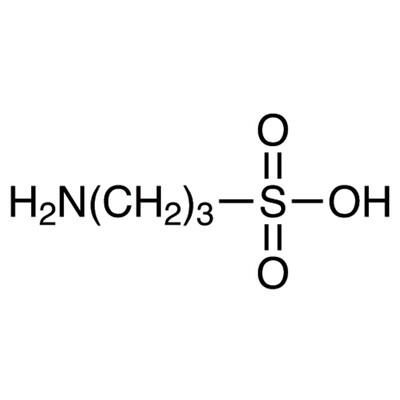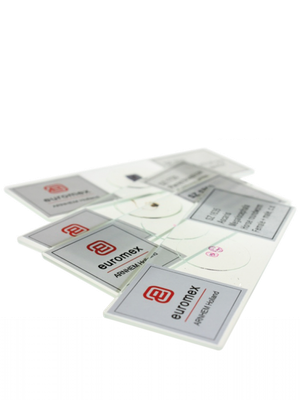Verzending 24–48 u • Levering in de hele EU • Veilige chemieverpakking
Ribonuclease A, 500 mg
SKU 7156.2
€ 1 305,56
In stock
1
Save this product for later
Ribonuclease A, 500 mg
Product Details
P-phrases: P210 P233 P305+P351+P338
H-phrases: H225-H319
CAS number: 64-17-5
Chemical formulas: C2H6O
Hazard class: 3 II
HS code: 35079090
Brand: Carl Roth
Ribonuclease A, 90 U/mg (Kunitz), BioScience-Grade, free from salt, Molar mass (M) ~13 700 g/mol, Storage temp. -20 °C, CAS No. [9001-99-4], EG-Nr. 232-646-6
Ribonuclease A 90 U/mg (Kunitz), BioScience Grade, salt-free
Extracted from bovine pancreas for RNA separation, especially when isolating RNA-free DNA. The enzyme cleaves RNA and produces 3' terminal nucleoside phosphates.
This quality product for molecular biology is free from salt, without proteases and is chromatographically homogeneous. Unit definition acc. to Kunitz.
Gebruiksinstructies
Working solution: 2-10 µg/ml in 10 mM Tris (pH 7,5), 15 mM NaCl.
Note: RNase precipitates when concentrated solutions are heated/cooked at pH ≥7,0. Store solution in aliquots at -20 °C
Technische informatie
| Gebruikstip | The DNase content of the RNase powder ist below detection limit. However, we nevertheless recommend pretreatment of the ribonuclease prior to using it for DNA isolation. DNase free RNase ist prepared by dissolution of the RNase powder in water, followed by cooking of the solubilised ribonuclease aliquots for 15 min. Let cool to room temperature on bench top. |
Enzyme: a neoclassical, Greek artificial word ενζυμου, énzymon, derived from εν-, en- (in-) and ζυμη, zýmé (yeast, sourdough, archaic)
Ferments: comes from the Latin fermentum (ferments, sourdough)
There are six classes in which all enzymes are classified according to the particular reaction they catalyse:
• Oxidoreductases (catalyse redox reactions)
• Transferases (transfer functional groups among substrates)
• Hydrolases (cleave bonds via addition of water)
• Lyases/Synthases (cleave or synthesise complex products out of basic substrates without cleavage of ATP)
• Isomerases (transform chemical isomers)
• Ligases/Synthetases (cleave or synthesise complex products out of basic substrates via cleavage of ATP)
| Appearance | white, freeze-dried powder |
| Assay (IEC, Amberlit CG50) | >95 % |
| Solubility (2 mg/ml, H2O) | clear, soluble |
| Activity (Kunitz) | ~90 U/mg |
| DNAse | not detected |
| Protease | not detected |
You May Also Like

Tetrakis(dimethylamido)diboron, 95.0%, 25g
Tetrakis(dimethylamido)diboron, 95.0%, 25g
SKU F011060-25G
€ 40,70

3-Amino-1-propanesulfonic Acid>98.0%(T)25g
3-Amino-1-propanesulfonic Acid>98.0%(T)25g
SKU A2602-25G
€ 357,50

2-Naphthaleneacetic Acid>98.0%(GC)(T)25g
2-Naphthaleneacetic Acid>98.0%(GC)(T)25g
SKU N0352-25G
€ 129,80

5-FLUOROAZEPAN-4-OL HCL, 95.0%, 500mg
5-FLUOROAZEPAN-4-OL HCL, 95.0%, 500mg
SKU F469662-500MG
€ 1 343,10
Display prices in:EUR




![2-Bromoimidazo[2,1-b][1,3,4]thiadiazole, 95.0%, 10g 2-Bromoimidazo[2,1-b][1,3,4]thiadiazole, 95.0%, 10g](https://d2j6dbq0eux0bg.cloudfront.net/images/88473019/4857448476.png)




